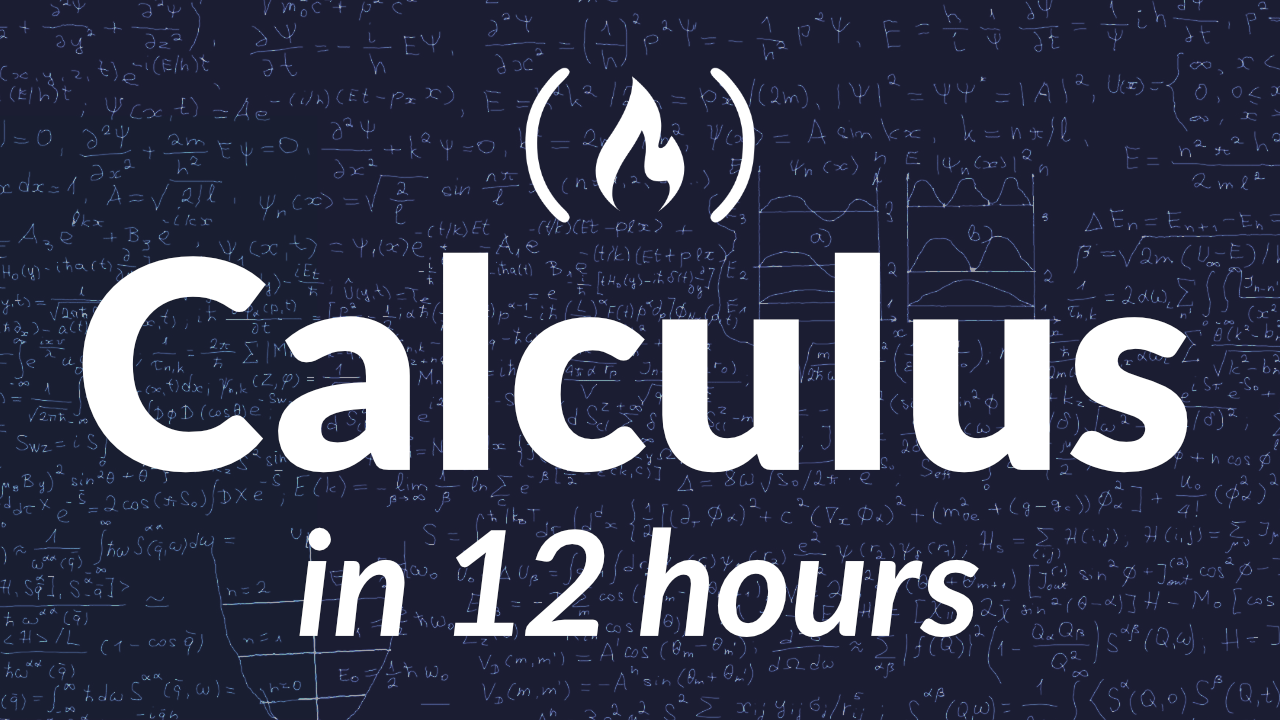Calculus concepts are important to understand for many types of software development.
Calculus is often used when developing algorithms for modeling real-word phenomena. It is also used in graphics and physics simulations, which are key parts to many video games. Calculus is also used in the field of machine learning.
We have posted a 12-hour college Calculus course on the freeCodeCamp.org YouTube channel.
This course was created by Dr. Linda Green who teaches at the University of North Carolina at Chapel Hill. She has years of experience teaching Calculus to undergraduate students.
This course actually combines two courses taught by Dr. Green. She teaches both Calculus 1 and a Calculus 1 Corequisite course, designed to be taken at the same time.
In this video, the lectures from the Corquisite course, which review important Algebra and Trigonometry concepts, have been interspersed with the Calculus 1 lectures at the places suggested by Dr. Green.
Below are all the Calculus concepts you will learn about in this course. The sections from the Corequisite course are identified.
- [Corequisite] Rational Expressions
- [Corequisite] Difference Quotient
- Graphs and Limits
- When Limits Fail to Exist
- Limit Laws
- The Squeeze Theorem
- Limits using Algebraic Tricks
- When the Limit of the Denominator is 0
- [Corequisite] Lines: Graphs and Equations
- [Corequisite] Rational Functions and Graphs
- Limits at Infinity and Graphs
- Limits at Infinity and Algebraic Tricks
- Continuity at a Point
- Continuity on Intervals
- Intermediate Value Theorem
- [Corequisite] Right Angle Trigonometry
- [Corequisite] Sine and Cosine of Special Angles
- [Corequisite] Unit Circle Definition of Sine and Cosine
- [Corequisite] Properties of Trig Functions
- [Corequisite] Graphs of Sine and Cosine
- [Corequisite] Graphs of Sinusoidal Functions
- [Corequisite] Graphs of Tan, Sec, Cot, Csc
- [Corequisite] Solving Basic Trig Equations
- Derivatives and Tangent Lines
- Computing Derivatives from the Definition
- Interpreting Derivatives
- Derivatives as Functions and Graphs of Derivatives
- Proof that Differentiable Functions are Continuous
- Power Rule and Other Rules for Derivatives
- [Corequisite] Trig Identities
- [Corequisite] Pythagorean Identities
- [Corequisite] Angle Sum and Difference Formulas
- [Corequisite] Double Angle Formulas
- Higher Order Derivatives and Notation
- Derivative of e^x
- Proof of the Power Rule and Other Derivative Rules
- Product Rule and Quotient Rule
- Proof of Product Rule and Quotient Rule
- Special Trigonometric Limits
- [Corequisite] Composition of Functions
- [Corequisite] Solving Rational Equations
- Derivatives of Trig Functions
- Proof of Trigonometric Limits and Derivatives
- Rectilinear Motion
- Marginal Cost
- [Corequisite] Logarithms: Introduction
- [Corequisite] Log Functions and Their Graphs
- [Corequisite] Combining Logs and Exponents
- [Corequisite] Log Rules
- The Chain Rule
- More Chain Rule Examples and Justification
- Justification of the Chain Rule
- Implicit Differentiation
- Derivatives of Exponential Functions
- Derivatives of Log Functions
- Logarithmic Differentiation
- [Corequisite] Inverse Functions
- Inverse Trig Functions
- Derivatives of Inverse Trigonometric Functions
- Related Rates - Distances
- Related Rates - Volume and Flow
- Related Rates - Angle and Rotation
- [Corequisite] Solving Right Triangles
- Maximums and Minimums
- First Derivative Test and Second Derivative Test
- Extreme Value Examples
- Mean Value Theorem
- Proof of Mean Value Theorem
- [Corequisite] Solving Right Triangles
- Derivatives and the Shape of the Graph
- Linear Approximation
- The Differential
- L'Hospital's Rule
- L'Hospital's Rule on Other Indeterminate Forms
- Newtons Method
- Antiderivatives
- Finding Antiderivatives Using Initial Conditions
- Any Two Antiderivatives Differ by a Constant
- Summation Notation
- Approximating Area
- The Fundamental Theorem of Calculus, Part 1
- The Fundamental Theorem of Calculus, Part 2
- Proof of the Fundamental Theorem of Calculus
- The Substitution Method
- Why U-Substitution Works
- Average Value of a Function
- Proof of the Mean Value Theorem for Integrals
We recommend you pull out some paper and a pencil and take physical notes – just like when you were back in a classroom.
This manual process of taking notes will help you better comprehend and retain these concepts, since Dr. Green moves fast and covers a lot of topics in a short time.
Watch the full course on the freeCodeCamp.org YouTube channel (12 hour watch).
